50% White Whole Wheat Sourdough Bread
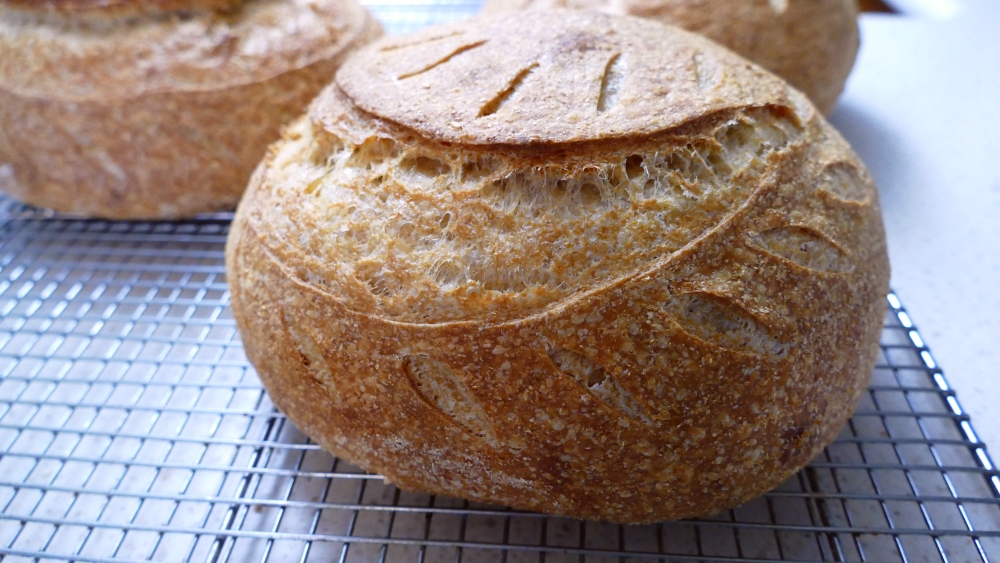

In the afternoon around 3-4 pm, add all of the ingredients in order to a dough trough or mixing bowl. Mix the ingredients thoroughly with hands until the ingredients are incorporated. The dough will look shaggy/rough. The dough temperature is 76-78F/24-25C. Cover the dough and allow it to ferment for one hour.
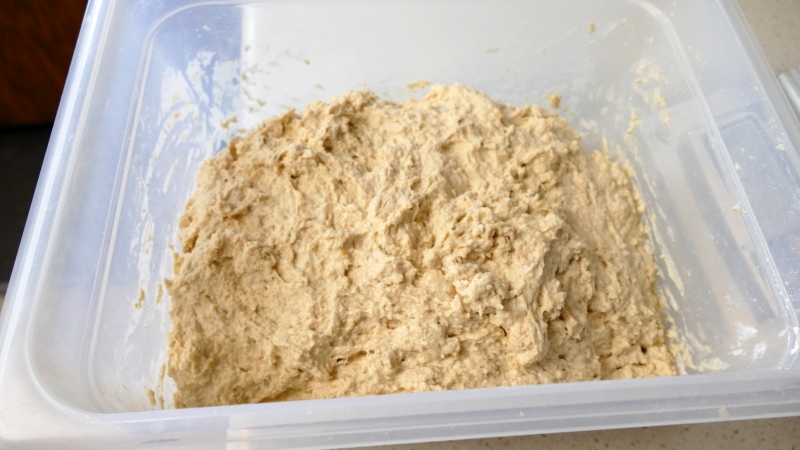
After the hour of fermentation, fold the dough. Then fold the dough again each hour for a total of three fold times. It will be three hours after mixing the dough by the time you've folded the dough three times. Allow the dough to ferment one more hour.
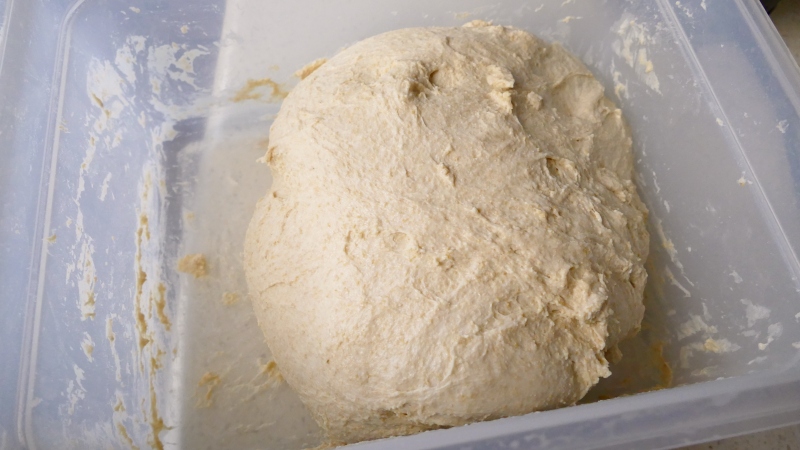
After the last hour is done and the dough has been fermenting four hours total, divide the dough into four pieces. Then shape as you desire, either rounds or oblongs/batards.
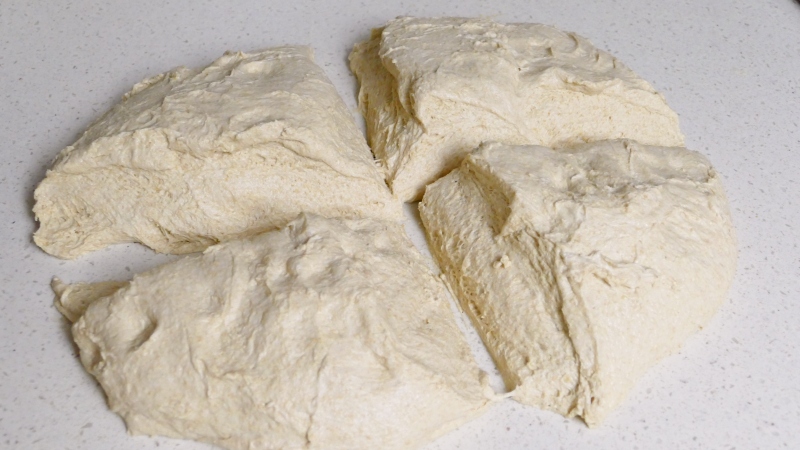
Place the shaped dough into floured bannetons. Then cover the dough/bannetons with plastic bags and allow the dough to set out for an additional half hour at room temperature (around 72F/22C). Then place the covered dough into the refrigerator overnight for about 12 hours.
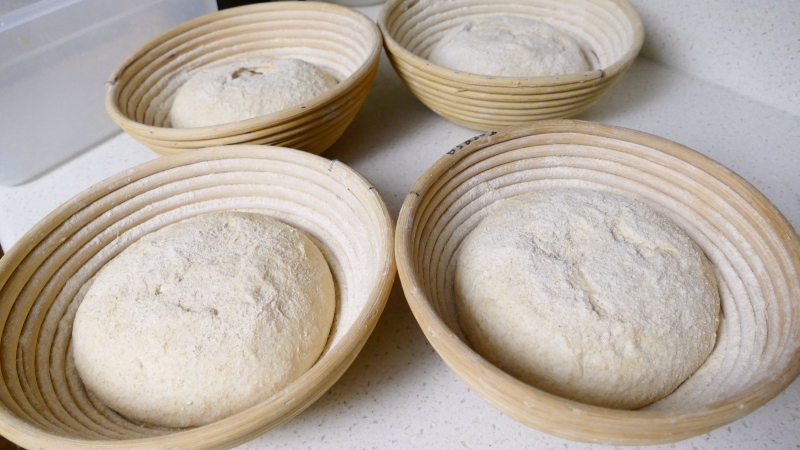
Next morning remove the dough (usually by staggering 30 minutes apart). Allow the dough to either final proof if the dough is still dense and needs more rising. Or if you check your dough in the morning and it's risen really well in the banneton, leave it in the fridge and pre-heat your oven/stone (to 480F/248C) for an hour before removing the dough.
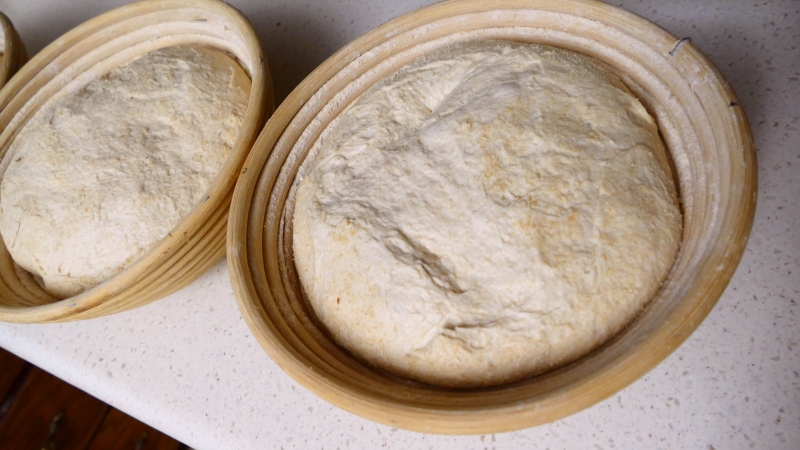
When the dough is ready to bake, score it, mist the dough with water, then bake it covered (for steam) for 17 minutes. Then uncover the dough and let it finish baking and browning for an additional 17 minutes or until the interior of the bread reaches at least 205F/96C
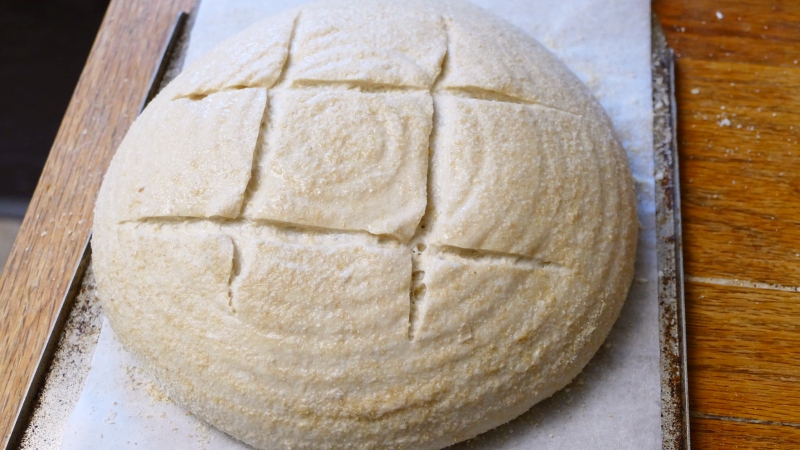
Bake the additional loaves the same way.
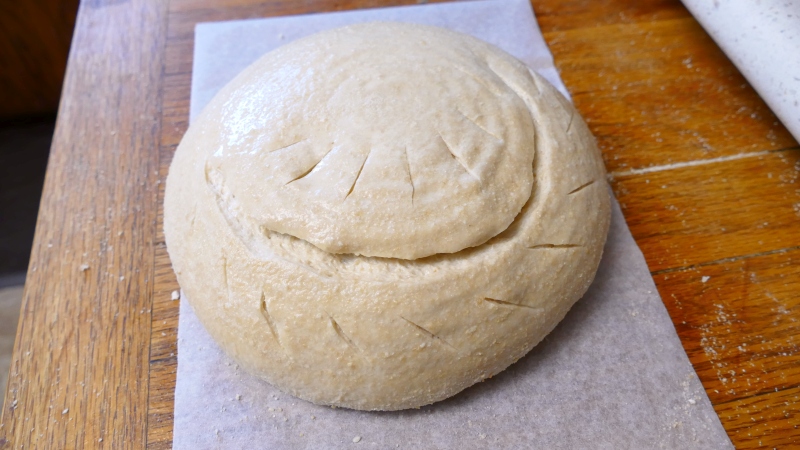
Place the finished loaves on a cooling grate and allow the bread to cool thoroughly before slicing.
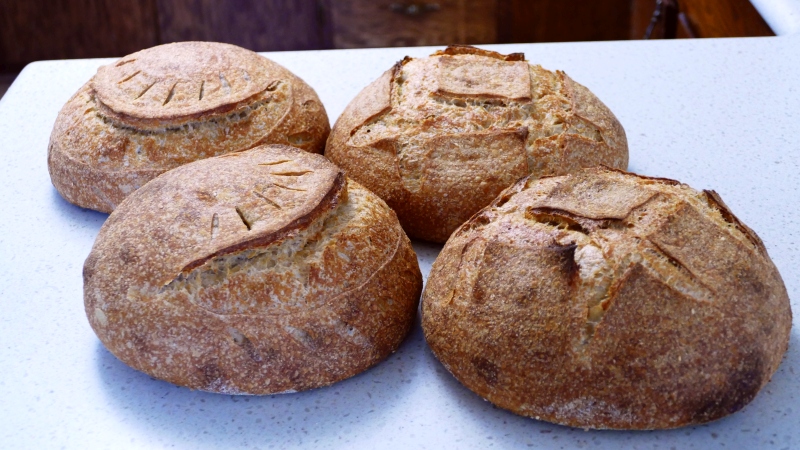
Ingredients
Directions
In the afternoon around 3-4 pm, add all of the ingredients in order to a dough trough or mixing bowl. Mix the ingredients thoroughly with hands until the ingredients are incorporated. The dough will look shaggy/rough. The dough temperature is 76-78F/24-25C. Cover the dough and allow it to ferment for one hour.

After the hour of fermentation, fold the dough. Then fold the dough again each hour for a total of three fold times. It will be three hours after mixing the dough by the time you've folded the dough three times. Allow the dough to ferment one more hour.

After the last hour is done and the dough has been fermenting four hours total, divide the dough into four pieces. Then shape as you desire, either rounds or oblongs/batards.

Place the shaped dough into floured bannetons. Then cover the dough/bannetons with plastic bags and allow the dough to set out for an additional half hour at room temperature (around 72F/22C). Then place the covered dough into the refrigerator overnight for about 12 hours.

Next morning remove the dough (usually by staggering 30 minutes apart). Allow the dough to either final proof if the dough is still dense and needs more rising. Or if you check your dough in the morning and it's risen really well in the banneton, leave it in the fridge and pre-heat your oven/stone (to 480F/248C) for an hour before removing the dough.

When the dough is ready to bake, score it, mist the dough with water, then bake it covered (for steam) for 17 minutes. Then uncover the dough and let it finish baking and browning for an additional 17 minutes or until the interior of the bread reaches at least 205F/96C

Bake the additional loaves the same way.

Place the finished loaves on a cooling grate and allow the bread to cool thoroughly before slicing.


Responses